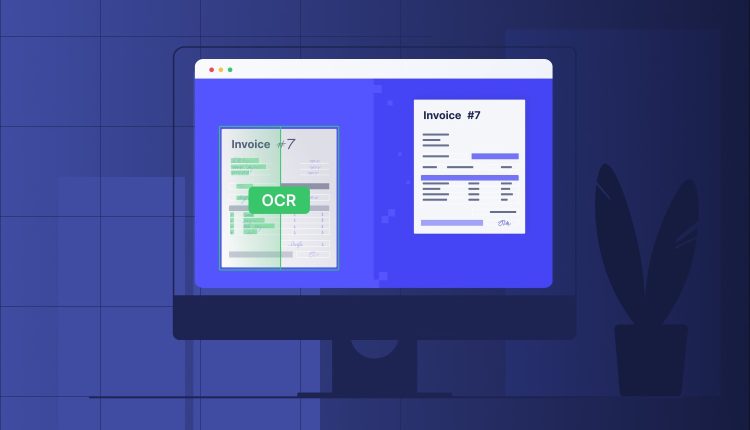In the ever-evolving landscape of business operations and technology, the quest for efficiency and automation remains a top priority for organizations across the globe. One area where significant strides have been made is in the realm of invoice processing, and at the forefront of this revolution stands Optical Character Recognition (OCR) technology. With a decade of experience in the field, this article will delve into the remarkable ways in which OCR is transforming the world of invoice processing, streamlining operations, reducing errors, and enhancing productivity.
The Fundamentals of OCR
Before we explore the applications of OCR in invoice processing, let’s begin by understanding what OCR is and how it works.
What is OCR?
Optical Character Recognition, commonly referred to as OCR, is a technology that enables the conversion of printed or handwritten text into machine-readable data. OCR software scans text from documents, images, or scanned paper files and translates it into electronic text characters that can be processed and analyzed by computers.
How Does OCR Work?
OCR software employs advanced algorithms to recognize and interpret the shapes and patterns of characters on a page. It utilizes machine learning and artificial intelligence to continually improve its accuracy in character recognition. When a document is processed through OCR, it undergoes several key steps:
- Image Preprocessing: The input image is cleaned, removing noise, enhancing contrast, and adjusting for skew or distortion.
- Text Detection: OCR identifies the regions of the image containing text.
- Character Recognition: The software analyzes each character within the identified text regions and assigns a corresponding text character or code.
- Post-processing: OCR algorithms refine the recognition results and correct errors, ensuring accuracy.
Now that we have a foundational understanding of OCR, let’s delve into its significance in automated invoice processing.
Streamlining Invoice Processing with OCR
Invoice processing is a critical aspect of financial management for businesses of all sizes. Traditionally, it involved manual data entry, which was time-consuming and error-prone. However, OCR technology has emerged as a game-changer in this domain.
Faster Data Extraction
OCR dramatically accelerates the process of extracting data from invoices. When invoices are received, OCR software swiftly scans and extracts information such as invoice numbers, dates, vendor details, and line-item details. This rapid data capture not only saves time but also allows for real-time tracking of financial transactions.
Error Reduction
Manual data entry is susceptible to human errors, leading to costly mistakes in financial records. OCR significantly reduces the risk of errors by providing high accuracy in character recognition. Moreover, OCR software can validate extracted data against predefined templates and rules, flagging any discrepancies for review.
Enhanced Data Accuracy
Accurate data is essential for financial analysis and decision-making. OCR ensures that the data extracted from invoices is error-free, enhancing the overall quality and reliability of financial data.
Cost Savings
The automation of invoice processing through OCR translates into substantial cost savings for businesses. It eliminates the need for extensive manual labor and the associated costs, such as hiring data entry personnel. Additionally, it reduces the risk of late payment penalties or overpayments due to data entry errors.
Implementing OCR in Invoice Processing
To harness the benefits of OCR in invoice processing, organizations need to implement a structured approach. Here are the key steps to consider:
Choose the Right OCR Solution
Select an OCR solution that aligns with your organization’s needs and budget. Evaluate factors such as recognition accuracy, scalability, integration capabilities, and ongoing support.
Prepare and Standardize Invoices
Standardize your invoice formats to facilitate efficient OCR processing. Clear fonts, consistent layouts, and well-organized data fields improve recognition accuracy.
Integration with Accounting Software
Integrate OCR technology seamlessly with your accounting or ERP system. This integration ensures that the extracted data flows directly into your financial software, reducing manual intervention.
Continuous Monitoring and Improvement
Regularly monitor the performance of your OCR solution and refine it as needed. OCR technologies are continually evolving, and updates can further enhance accuracy and efficiency.
Future Trends in OCR for Invoice Processing
As technology continues to advance, OCR for invoice processing is poised for even greater transformations. Here are some future trends to watch out for:
Artificial Intelligence and Machine Learning
OCR systems will increasingly leverage AI and machine learning to adapt and improve recognition accuracy. They will become more adept at handling complex documents and diverse languages.
Data Extraction from Unstructured Documents
OCR will extend its capabilities to extract data from unstructured documents, such as emails and handwritten notes, expanding its utility beyond structured invoices.
Cloud-Based OCR Services
Cloud-based OCR services will gain popularity, offering scalability, accessibility, and reduced infrastructure costs for businesses of all sizes.
Integration with Blockchain
Integration with blockchain technology will enhance the security and traceability of financial transactions, making invoice processing even more secure and transparent.
In conclusion, OCR technology has emerged as a transformative force in the world of automated invoice processing. Its ability to swiftly and accurately extract data from invoices not only streamlines operations but also reduces errors and costs. As organizations continue to embrace OCR and its evolving capabilities, the future of invoice processing looks promising, with increased efficiency and accuracy on the horizon. Stay tuned for further advancements in this exciting field.



Comments are closed.